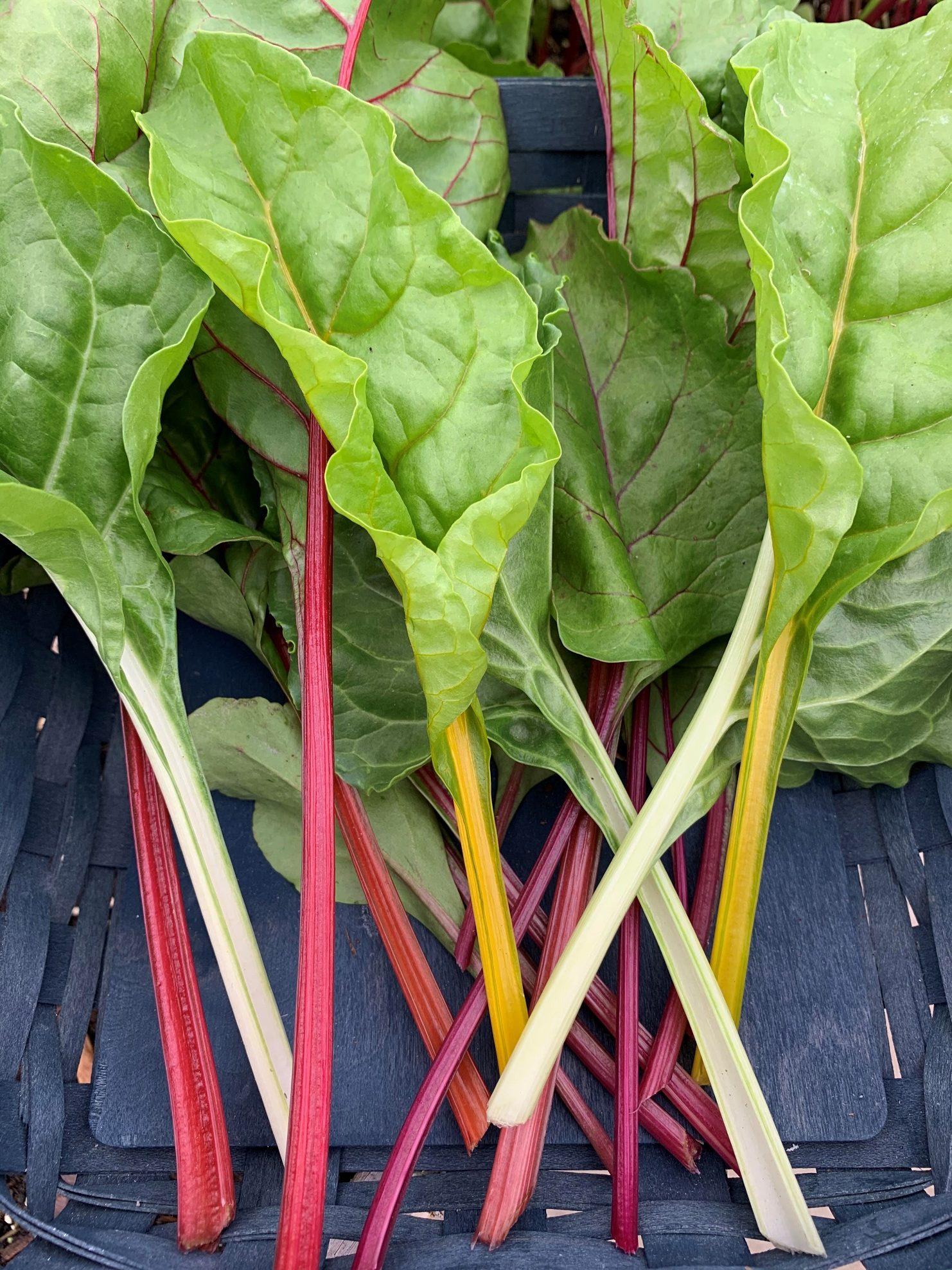Swiss chard, or chard as it is also called, is one of the most nutritious, low maintenance plants you can have in your garden. Not only is it easy to grow, but its beautiful foliage also adds vibrant color to any growing space. Swiss chard is similar to kale in both shape and texture, however, it is more tender and many prefer its milder, sweeter taste to the often bitter kale. Its ribbed stalks can be eaten as well and are similar in taste and texture to a mild celery.
Chard is rich in vitamins K, A, and C, as well as magnesium, iron, potassium, and fiber. It is also full of antioxidants and phytonutrients, which helps reduce inflammation and helps fight disease development. Plus, Swiss chard has the distinction of being chosen to be one of the first foods to be grown in future lunar and planetary space stations![1]
Contrary to what its name implies, Swiss chard is not indigenous to Switzerland. Instead, the name comes from Swiss botanist Gaspard Bauhin who was among the first to document this leafy vegetable. If you think chard looks similar to beet leaves, its because they are from the same plant family. In fact, some refer to Swiss chard as silver beet, leaf beet, or beet spinach.
This article contains affiliate links. If you make a purchase using one of these links, I will receive a very small commission at no additional cost to you, and it will help me maintain this website. Rest assured, I only recommend products I actually like!
How to Plant
Swiss chard can be successfully grown in both traditional beds and containers. It is considered a cool-weather crop that can tolerate a light frost. Unlike most other greens, however, it can also be grown in warmer temperatures.

There are as many different opinions as to the best time to plant Swiss chard as there are varieties of chard. In general, if you would like to grow a spring crop, sow seeds indoors under a grow light about four weeks before the last frost date. Alternatively, you can direct sow seed after the risk of frost has passed. On the other hand, some say you don’t have to wait for the risk of frost to pass but recommend sowing seed a few weeks before the last spring frost date. Regardless of whether you sow before or after the last frost, the soil temperature will need to be at least 50 F for the seeds to emerge. To ensure a continuous harvest of chard, sow additional seeds every few weeks.
In some areas, Swiss chard that was planted in the spring will continue to produce during the summer, which makes it a good alternative to spinach and other greens that can’t tolerate the heat. Know, however, that it grows slower during warmer temperatures. Be sure to keep it well watered.
If you’re interested in growing a fall crop, sow seeds anywhere between six and ten weeks before the first frost date. If you are unsure of the first and last frost dates for your area, you can find that information here. This link is also listed on my resource page along with other helpful information.
Sow seeds about 1/2″ deep in organic, well-draining soil with a pH between 6.0 and 7.0. Space the seeds at least 6″ to 12″ apart. The farther apart they are, the bigger the leaves will grow. Keep in mind, however, that if the plant gets too large, it will lose its flavor. If you are going to grow chard in a container, and you plan on harvesting leaves often, you can easily plant 3 to 4 plants in a pot that is 12″ in diameter. If you will be harvesting less often or you are more interested in growing chard for ornamental purposes, plan on placing one to two plants per 12″ container. The particular variety you plant will also determine spacing, so be sure to consult the seed packet.
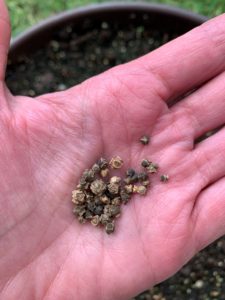
Each Swiss chard “seed” is actually a pod containing two to four seeds, which will emerge in about 7 to 10 days. If you find the seeds are not germinating well, you can try soaking them in warm water for several hours before planting. The process is called seed scarification and you can learn more about the process in this helpful article. Once they have grown three or four inches tall, you can carefully thin out the weaker seedlings by cutting them off at soil level, leaving the strongest, healthiest ones. Don’t throw the “rejects” out as you can eat them just like you would microgreens.
Sun, Water, and Fertilizer
Swiss chard needs at least 5 to 6 hours of full sun. Depending on where you live, you may even be able to grow Swiss chard through the summer, especially if it gets a little shade. It can get a bitter taste if it gets too hot, though. It will grow better in the cooler temperatures of spring and fall.
It is important to water Swiss chard consistently. Do not let the soil dry out. Add a layer of mulch to help the soil retain moisture during warmer months.
Like other greens, Swiss chard can tolerate a light frost, which means you’ll be able to enjoy it in cooler weather, much like you would lettuce, spinach, and kale. But you will want to cover them during a light freeze with a row cover or plant blanket.
Since this vegetable consists of leaves and no fruit, a fertilizer that is higher in nitrogen will feed the leaf growth, although a balanced fertilizer will also work. Be sure to follow instructions on the fertilizer package.
How to Harvest
When leaves reach about 6″ tall, harvest by cutting the stems of the outer leaves an inch above the soil line, this will allow the inner, and therefore, younger leaves to continue to grow. If you harvest them when they are around 12″ or taller, they won’t be as flavorful. Swiss chard leaves will keep in the refrigerator for 3 or 4 days if placed in a plastic bag or similar container.
You can use chard in any dish that calls for kale or spinach. Sauté it with garlic, mushrooms, and other vegetables and serve with pasta. Or add sautéed chard to omelets and casseroles. It is also perfect for stews, soups and salads.
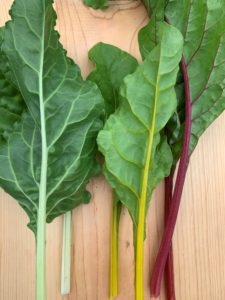
Seed Saving
Swiss chard is considered a biennial, meaning it will not set seed until its second year. Because it is a member of the beet family, there is a chance chard and beets will cross-pollinate. Therefore, while you can grow both crops in the same season, you may want to let only one crop go to seed, so there is no cross-pollination.
Pests and Diseases
Swiss chard is a hardy plant, but it can be susceptible to certain pests. Aphids are tiny, soft-bodied insects that attack a wide variety of plants, including chard. You can learn how to identify and treat aphids in this article.
This article contains affiliate links. If you make a purchase using one of these links, I will receive a very small commission at no additional cost to you, and it will help me maintain this website. Rest assured, I only recommend products I actually like!
Cutworms are the caterpillar stage of nocturnal moths that eat away at the plant’s stem, cutting it off at the soil, hence the name, cutworm. Some have found that placing a cardboard collar around the base of the plant helps deter them. Neem oil is an antifeedant that can help deter them as well. I use the same recipe for chewing insects that I use for aphids. Remove the cutworm or other chewing insect and spray weekly as needed. Here is the neem oil I recommend. You can learn more about how to identify and get rid of cutworms in this article.
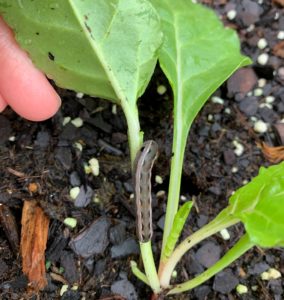
Snails and slugs are common garden pests that chew on greens, including Swiss chard. Look for them just under the surface of the soil or, if your plants are in containers, look on the sides and underneath the pots. Alternatively, you can set an inexpensive trap for them by laying a board or a piece of cardboard on top the soil. In the morning, you’ll find them taking refuge under the trap where you can collect and dispose of them easily.
Leaf miners are another pest that may attack Swiss chard. Tiny larvae tunnel through the leaf’s tissue leaving irregular tracks. This is especially problematic since the leafy part of the plant is what we eat. You can learn more about leaf miners and how to treat them organically in this article.
Cercospora leaf spot is a fungal disease that can plague Swiss chard. It is characterized by circular spots with a purple outer ring and a light gray or tan center. The spores overwinter on crop debris and multiply under warm and wet conditions. Older spots on leaves can be a source of new infections, so be sure to prune infected leaves and wipe the blades of your cutting tools with rubbing alcohol to keep the infection from spreading to other plants. (You can learn more about how to effectively disinfect garden tools in this helpful article.)
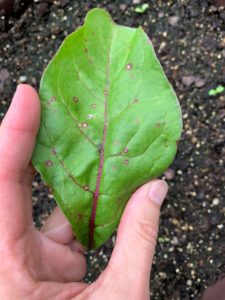
Varieties
There are a number of varieties of Swiss chard. Some of the more popular ones are:
Rainbow Swiss Chard is variety known for is colorful stems that come in shades of red, orange, yellow, and purple. Days to maturity is approximately 65 days.
Bright Lights is another colorful variety that boasts of white, gold, yellow, orange, red, and purple stalks that grow to about 12″ tall.
Peppermint is a variety that, as its name suggests, has red and white striped stalks. It is slower to bolt and reported to be more resistant to disease.
Green Lucullus is one of the most common varieties of Swiss chard. Its leaves are dark green, and its stalks are white. It’s a good variety to grow if you live in a warm climate because it is more heat tolerant than other varieties.
Oriole is a gold-stemmed variety named after the Oriole bird. It can tolerate both heat and cold, and it matures in about 60 days.
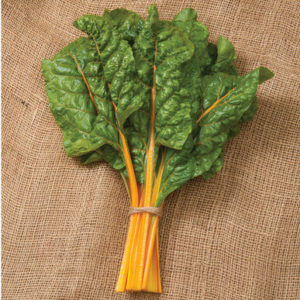
Barese is a compact variety that boasts tender leaves and white stalks that grow to only 10″ tall. It can be harvested in as little as 30 days.
Fordhook is considered a “giant” variety that reaches 16″ to 18″ tall. It has dark green leaves and creamy white stems. In addition, Fordhook is heat tolerant and matures in about 60 days.
Swiss chard is a versatile leafy green that is hardy in both cool weather and warmer climates. It’s a great alternative to spinach and kale that is easy to grow and would make a great addition to your garden!
Thank you for reading this article! If you found it helpful, please consider sharing it with others on social media!
[1] Logan S Logendra, Swiss Chard: A Salad Crop for the Space Program, NIH PubMed, accessed 10-05-20, https://pubmed.ncbi.nlm.nih.gov/12481809/
